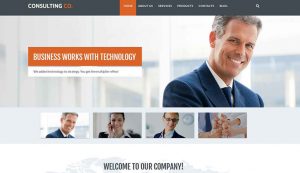UX Comes First: How to Stop Making The Most Common Mistakes
Even before the Internet existed, user experience was important. Think about it. Why would you patronize a restaurant over and over again, or remain loyal to a particular car manufacturer? Why might your parents have traveled across town to go to a grocery store when there was one closer to home? The answer to these questions is that good experiences lead to loyalty. They also lead to repeat purchases, and word of mouth recommendations.
Today, the first experience that many people have with your brand is through your website. If you provide them with a good experience, they will likely stick with you. This means ensuring that you have designed for great UX no matter where visitors are in the purchasing cycle. Unfortunately, there are a few very common mistakes that web designers seem to make when it comes to UX design.
Not Getting or Listening to User Feedback
How can you design a great user experience if you don’t take the time to collect information about the requirement of your users want, or if you fail to incorporate user feedback into your design strategy. One of the issues that web designers often struggle with is the tendency to develop tunnel vision. They develop an idea that a good user experience looks and feels a certain way. Then, they either ignore anything that contradicts that, or they simply don’t consider asking for feedback at all. One way to avoid this, is to get feedback from users throughout the design process, and after a web page has been published.
Not Focusing on Customer Satisfaction
How can we get conversions? This question is what is primarily on the mind of web designers. That’s not necessarily a bad thing. You do want conversions, and you want to design your pages to facilitate that. The problem comes when that is your only focus. Then, your design is nothing more than an effort to direct users towards making a decision that you want them to make. It’s difficult to design for user experience if you aren’t considering customer satisfaction.

When designing a web page, don’t forget to focus on customer experience as well as conversion. Ask yourself what the customer will enjoy, find interesting, or think is helpful about the page. Try to see your design from a user’s perspective, and then work to make it something that prioritizes their satisfaction.
Writing Mediocre Content
Content matters. You should make sure that important elements of quality content included Relevance, proper grammar and spelling, readability, and accuracy . If your content doesn’t contain these elements, visitors will become frustrated. Take the time to write content that is enjoyable to read, and helps your visitors solve their problems, and you will build trust and increase the likelihood of future visits. Finally, remember that content matters on every single page on your website.Yes,your blog posts, landing pages, and homepage are especially important, but don’t slack on your policy pages. You want your content to be of consistently high quality throughout your website.
Failing to Truly Optimize For Mobile
Usability is great, but it isn’t optimization. Too many web designers take the time to ensure that mobile users can read, click on links, and scroll through their websites. However, what they negelct is truly optimize for mobile. Having a website that can be used from mobile isn’t enough. Mobile optimization isn’t just about screen size. It’s about user behavior and needs. You have to take into consideration the needs of mobile users, along with the size of their screens.

Using Confusing or Overly Complex UI
There is a trend towards an almost gamification of the user experience. For some brands, for some websites, this works really well. However, it is important to keep in mind that having a lot of bells and whistles in your design, does not mean that your UX is on point. Yes, if you are a brand similar to Taco Bell or Red Bull with a younger demographic, your audience might enjoy a flashier experience. Just remember that simplicity and ease of use is a perfectly valid way to approach user experience. In fact, even if you do opt for a more exciting interface and experience, don’t forget that users should still be able to find information easily, and answer your call to action without dealing with too much complexity.
Missing Personalization
The best user experience is one that feels as if it has been specifically designed for the person visiting your website. If you don’t consider personalization, your web design and the resulting user experience can feel generic, almost like a one size fits all experience. You can personalize the experience by doing a few of the following things.
- Creating content that is mostly original and being extremely selective about what is curated.
- Continually updating your web pages so they are current and accurate.
- Segmenting your visitors and designing a unique experience for each segment.
Using Forms That Are Too Long
Designing forms for your website is a bit of a balancing act. The number of information about a customer’s or potential customer’s demographics would influence your ability to create targeted marketing campaigns in the future. You can also use this information to help solidify your customer personas. On the other hand, people are protective of their personal information. They’re also not naive. For example, if you are trying to get people to subscribe to a monthly newsletter, the average person knows that all you need is their name and email address. Force them to provide more, and they may become suspicious or irritated.
Ultimately, getting the user to subscribe or answer some other call to action is more important than gathering extra information. You’ll have other opportunities to gather extra marketing data. Keep forms short, or make extra fields optional.





